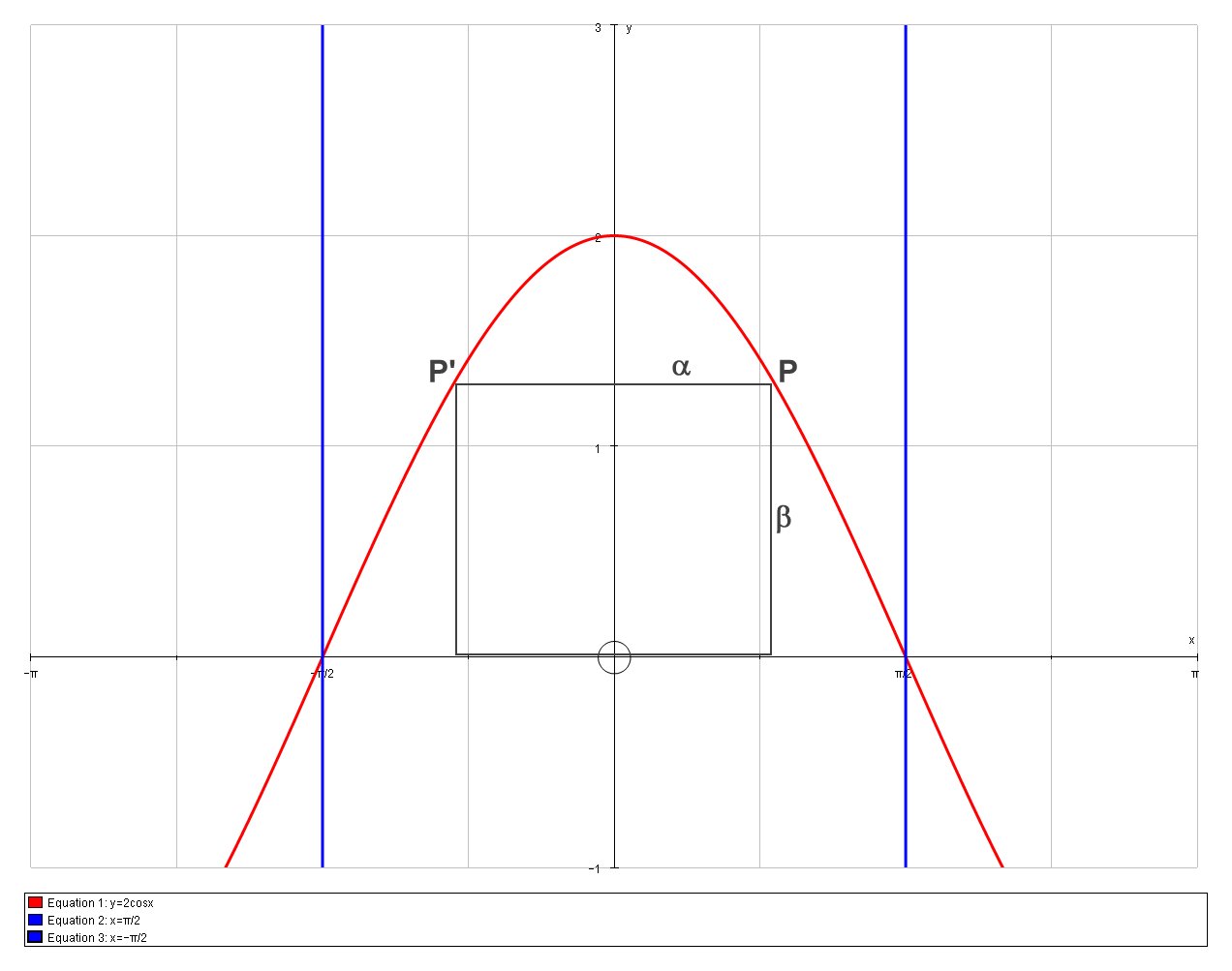What is the area of the largest rectangle that can be inscribed under the graph of y=2 cos x for -π /2 ≤x ≤π /2?
1 Answer
Maximum area is
Explanation:
I assume that you man bounded by the x-axis also, otherwise the largest rectangle would be unbounded and therefore infinite.
This is a diagram depicting the problem:

Where
Let us set up the following variables:
# { (alpha, x"-coordinate of point "P), (beta, y"-coordinate of point "P),(A, "Total Area of inscribed rectangle") :} #
Our aim is to find
As
# beta = 2cos alpha \ \ \ \ \ ..... [1]#
And the total Area is that of a rectangle of width
# A = 2 alpha beta #
# \ \ \ = 2 alpha (2cos alpha) \ \ \ \ \# (from [1] )
# \ \ \ = 4 alpha cos alpha #
We now have the Area,
# (dA)/(d alpha) = (4alpha)(-sin alpha) + (4)(cos alpha) #
# \ \ \ \ \ \ = 4(cos alpha - alpha sin alpha )#
At a critical point we have
# 4(cos alpha - alpha sin alpha ) = 0 #
# :. cos alpha - alpha sin alpha = 0 #
In order to solve this equation we use Newton-Rhapson which gives
With this value of
# beta = 1.30436924 ... #
# A = 2.24438535 ... #
We can visually verify that this corresponds to a maximum by looking at the graph of
graph{4xcosx [-4, 4, -5.5, 5.5]}
So maximum area is

